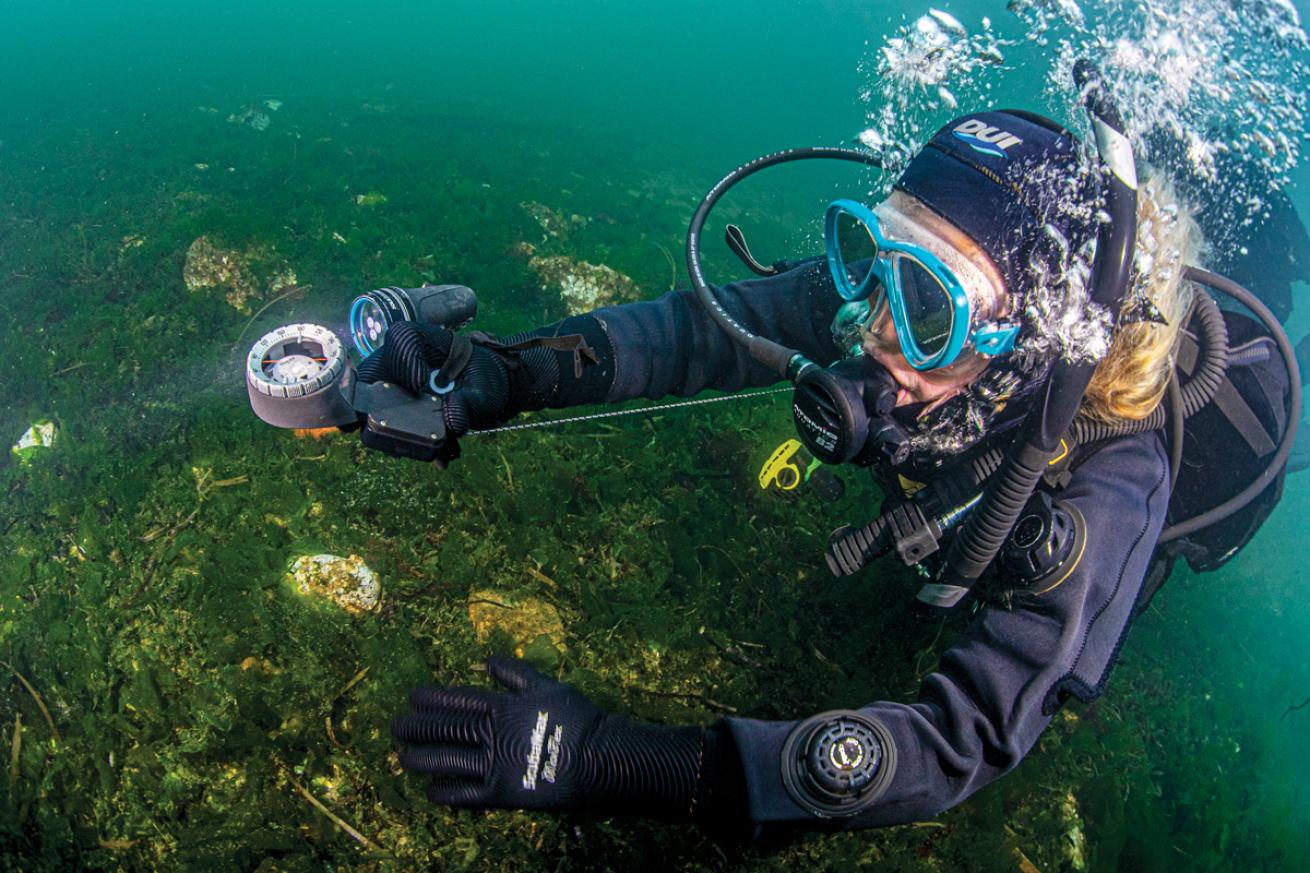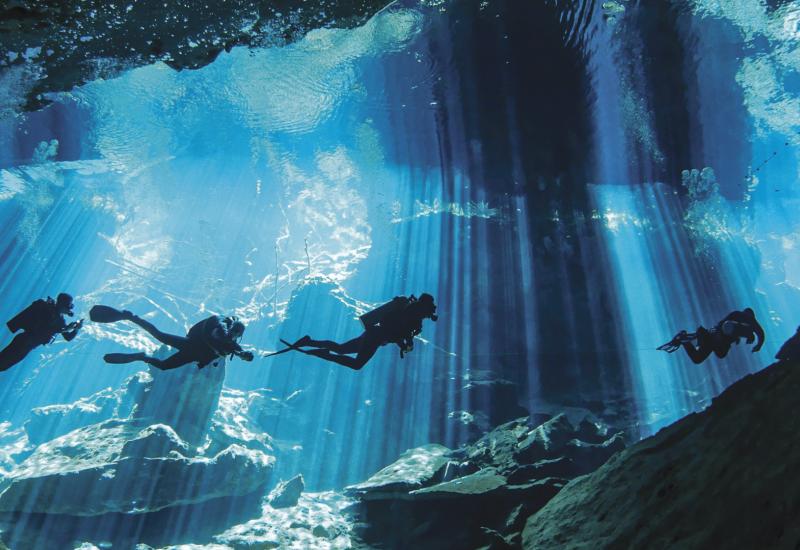How to Be a Better Underwater Navigator

Annie CrawleyIf you’re using a compass for navigation, keep it level to get an accurate heading. A retractor can help you avoid dangling gear while keeping the compass close at hand.
Building advanced navigation skills is crucial to gaining confidence while exploring underwater environments safely. There are several ways to build trust with yourself and your buddy as you experiment and learn. Here are some of my favorite techniques to improve your skills.
Study Underwater Maps
Before getting in the water at a site, familiarize yourself with underwater maps. A good map includes key features, depths, compass headings, bottom composition, unique animals and considerations for entry and exit points. For popular dive sites, you can find maps in books, on slates, on the internet or at your local dive shop. When traveling, talk to local operators.
Arrive early to the dive site. Using a map with your buddy, walk out the site with your compass and slate. Write down unique details to look for, like rock or coral formations or other reference points. Having headings and distances handy on a slate will prevent underwater stress or confusion.
Discuss how to share navigational responsibility while diving. Perhaps one buddy will navigate, and the other will control distance. Use your slate during the dive to draw or write down key features you notice, so when you turn your dive, you will have a guideline to natural references that complement your reverse compass headings. After your dive, compare your experience to the map you used to plan your dive. Would you change anything? How would you improve it? Log your dive and make notes. When diving a new or less familiar site, don’t cover as much ground. Take things slowly and build confidence as you explore further on each dive.
During the PADI Junior Divemaster and Divemaster courses, students create an underwater map of a dive site. It’s one of my favorite skills students learn because it builds awareness and attention to detail.
Related Learning: PADI Underwater Navigator
Once you feel confident navigating an out-and-back reciprocal course, I encourage all levels of divers to start mapping every dive they make and adding it to their logbooks as it builds global awareness.
During search and recovery dives, you learn how to cover a designated area systematically using advanced navigation techniques including U-patterns and expanding square search patterns. Using these search patterns throughout multiple dives increases understanding of the key features of a dive site. Once you learn a site systematically, you can dive it more freely because you know all the key features.
Related Reading: Seeing in Depth: What it Takes to Create Underwater Maps
Additional Tools
Being able to lay a transect and know the exact distances between features helps develop underwater distance accuracy. If you do not have a transect, consider laying a 100-foot line marked with 10-foot increments. Carry a compass on every dive. I prefer an analog compass, but many computers have a built-in digital compass. If yours does, calibrate it according to manufacturer guidelines before your dive.
Low-Visibility Diving
Whether you are deep diving, night diving or diving in shallow water with bad viz, there are key advanced navigation techniques you can utilize.
Always carry a light and a backup light and use them to illuminate your SPG and compass. Turn your computer light on as well. In low-visibility conditions, you will need to move slower and cover less terrain than you might on a day dive or one with great visibility. The key to lowviz or night diving is to make simple navigational patterns so you do not get lost. Intricate navigational patterns can create unneeded underwater stress for yourself or your buddy.
Never dive with a new buddy or new equipment on a night dive. It’s not always possible, but try to do a familiarization dive to a site before diving at night. Before getting into the water on a night dive or low-viz dive, discuss your dive plan with your buddy and keep it simple.
Related Reading: In the Dark | Lessons for Life
Pro Tip
PADI Discover Local Diving adventures get you out with a professional to get acquainted with an unfamiliar site. Many dive shops around the world have weekly or monthly shop dives. Take advantage of every opportunity to dive with a local professional as your guide. Ask lots of questions before and after if you plan on heading back to the site to navigate on your own.










